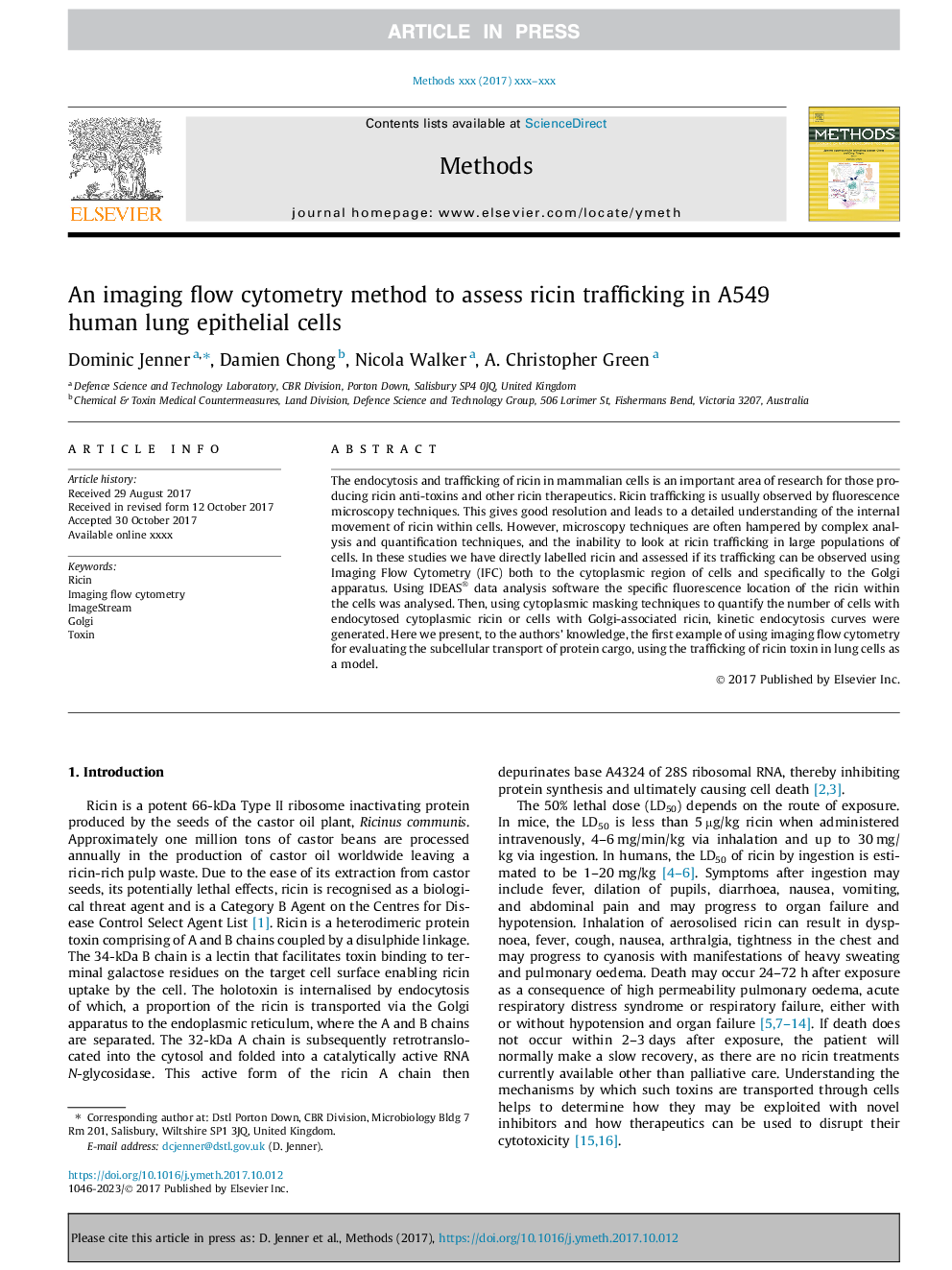| Article ID | Journal | Published Year | Pages | File Type |
|---|---|---|---|---|
| 8340121 | Methods | 2018 | 9 Pages |
Abstract
The endocytosis and trafficking of ricin in mammalian cells is an important area of research for those producing ricin anti-toxins and other ricin therapeutics. Ricin trafficking is usually observed by fluorescence microscopy techniques. This gives good resolution and leads to a detailed understanding of the internal movement of ricin within cells. However, microscopy techniques are often hampered by complex analysis and quantification techniques, and the inability to look at ricin trafficking in large populations of cells. In these studies we have directly labelled ricin and assessed if its trafficking can be observed using Imaging Flow Cytometry (IFC) both to the cytoplasmic region of cells and specifically to the Golgi apparatus. Using IDEAS® data analysis software the specific fluorescence location of the ricin within the cells was analysed. Then, using cytoplasmic masking techniques to quantify the number of cells with endocytosed cytoplasmic ricin or cells with Golgi-associated ricin, kinetic endocytosis curves were generated. Here we present, to the authors' knowledge, the first example of using imaging flow cytometry for evaluating the subcellular transport of protein cargo, using the trafficking of ricin toxin in lung cells as a model.
Related Topics
Life Sciences
Biochemistry, Genetics and Molecular Biology
Biochemistry
Authors
Dominic Jenner, Damien Chong, Nicola Walker, A. Christopher Green,
